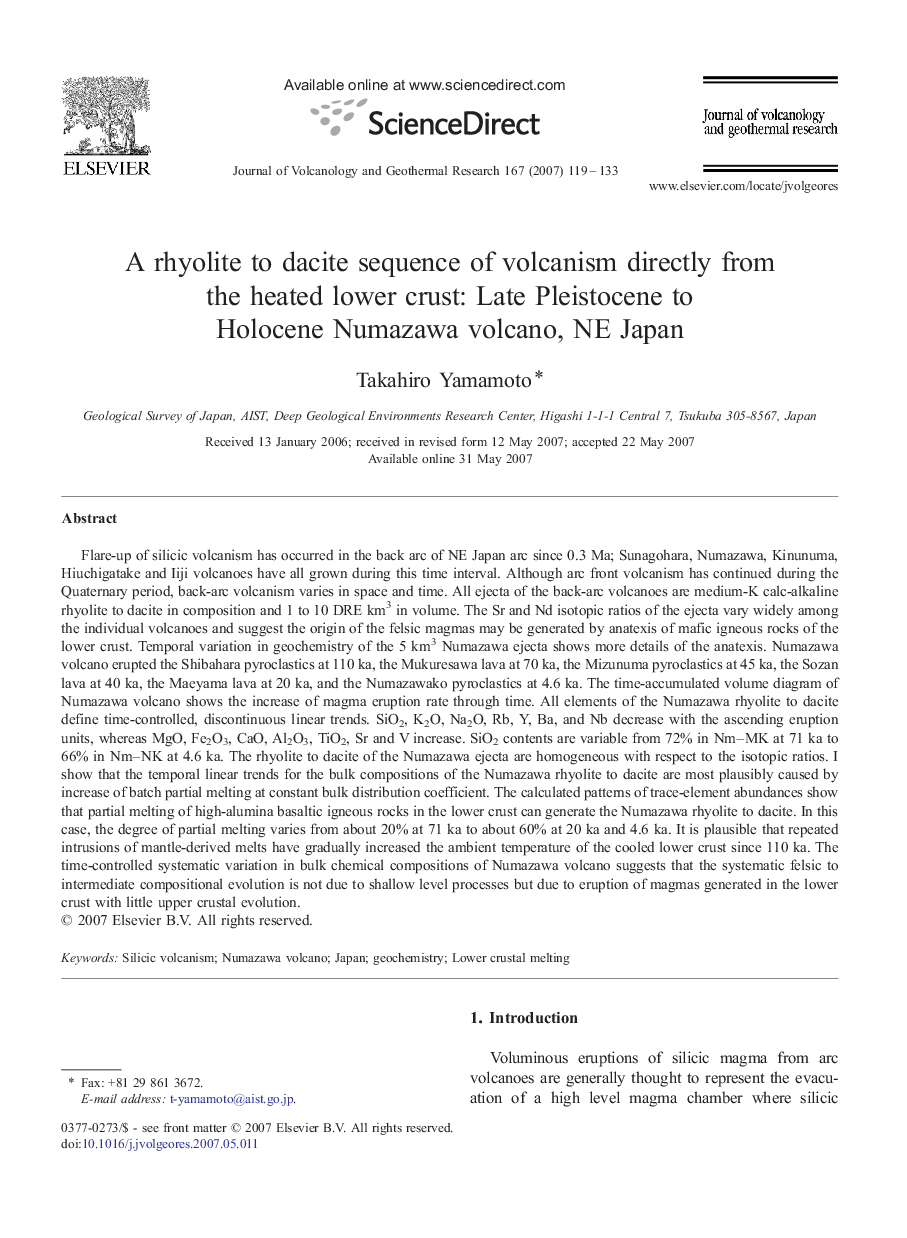| Article ID | Journal | Published Year | Pages | File Type |
|---|---|---|---|---|
| 4714860 | Journal of Volcanology and Geothermal Research | 2007 | 15 Pages |
Flare-up of silicic volcanism has occurred in the back arc of NE Japan arc since 0.3 Ma; Sunagohara, Numazawa, Kinunuma, Hiuchigatake and Iiji volcanoes have all grown during this time interval. Although arc front volcanism has continued during the Quaternary period, back-arc volcanism varies in space and time. All ejecta of the back-arc volcanoes are medium-K calc-alkaline rhyolite to dacite in composition and 1 to 10 DRE km3 in volume. The Sr and Nd isotopic ratios of the ejecta vary widely among the individual volcanoes and suggest the origin of the felsic magmas may be generated by anatexis of mafic igneous rocks of the lower crust. Temporal variation in geochemistry of the 5 km3 Numazawa ejecta shows more details of the anatexis. Numazawa volcano erupted the Shibahara pyroclastics at 110 ka, the Mukuresawa lava at 70 ka, the Mizunuma pyroclastics at 45 ka, the Sozan lava at 40 ka, the Maeyama lava at 20 ka, and the Numazawako pyroclastics at 4.6 ka. The time-accumulated volume diagram of Numazawa volcano shows the increase of magma eruption rate through time. All elements of the Numazawa rhyolite to dacite define time-controlled, discontinuous linear trends. SiO2, K2O, Na2O, Rb, Y, Ba, and Nb decrease with the ascending eruption units, whereas MgO, Fe2O3, CaO, Al2O3, TiO2, Sr and V increase. SiO2 contents are variable from 72% in Nm–MK at 71 ka to 66% in Nm–NK at 4.6 ka. The rhyolite to dacite of the Numazawa ejecta are homogeneous with respect to the isotopic ratios. I show that the temporal linear trends for the bulk compositions of the Numazawa rhyolite to dacite are most plausibly caused by increase of batch partial melting at constant bulk distribution coefficient. The calculated patterns of trace-element abundances show that partial melting of high-alumina basaltic igneous rocks in the lower crust can generate the Numazawa rhyolite to dacite. In this case, the degree of partial melting varies from about 20% at 71 ka to about 60% at 20 ka and 4.6 ka. It is plausible that repeated intrusions of mantle-derived melts have gradually increased the ambient temperature of the cooled lower crust since 110 ka. The time-controlled systematic variation in bulk chemical compositions of Numazawa volcano suggests that the systematic felsic to intermediate compositional evolution is not due to shallow level processes but due to eruption of magmas generated in the lower crust with little upper crustal evolution.
